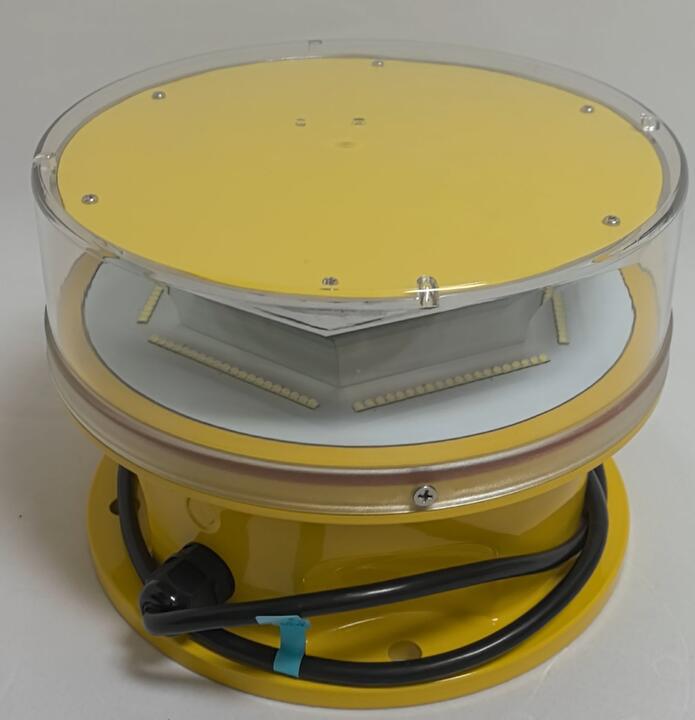Posted: 2025-05-06
The evolution of lighting technology has transformed many industries, but few have benefited as significantly as aviation. Among the most impactful advancements is the aviation LED, a lighting solution that has redefined how aircraft and airports approach visibility, safety, and efficiency. As traditional lighting systems phase out, aviation LED systems are becoming the new standard, offering unmatched durability, performance, and adaptability in demanding environments.
What Is an Aviation LED?
An aviation LED refers to light-emitting diode technology specifically designed for aviation-related applications. This includes lighting used on aircraft (interior and exterior), airfields, helipads, taxiways, control towers, and even drone systems. These LEDs serve both functional and regulatory purposes—ensuring visibility for pilots, alerting ground crews, guiding takeoffs and landings, and enhancing passenger comfort.
From landing lights and navigation lights to runway edge lights and cockpit indicators, aviation LED systems have become essential components of modern flight infrastructure.
The Shift From Conventional Lighting to Aviation LED
For decades, aviation relied heavily on incandescent and halogen lighting systems. While effective, these older technologies were power-hungry, generated excessive heat, and required frequent maintenance. The transition to aviation LED was driven by the need for a more reliable, long-lasting, and energy-efficient alternative.

LEDs deliver consistent brightness, faster response times, and superior resistance to vibration and temperature fluctuations—all critical in the dynamic aviation environment. The result is reduced operational downtime, improved safety margins, and enhanced visibility in all weather conditions.
Key Benefits of Aviation LED Technology
1. Longevity and Durability
Aviation LED systems are built to last. Unlike filament-based lights, LEDs are solid-state devices that resist mechanical shocks and harsh environmental exposure. This durability extends the service life of critical lighting components across aircraft and airfield systems.
| aviation led |
2. Energy Efficiency
LEDs consume significantly less power than traditional lighting solutions. In aircraft systems, this translates into lighter electrical loads, improved fuel efficiency, and optimized onboard power management.
3. Enhanced Safety and Visibility
Aviation LED lights offer high-intensity, precisely directed beams that enhance visibility at longer distances. Their rapid response and consistent color output make them ideal for navigation, signaling, and anti-collision purposes. On runways and taxiways, LEDs improve pilot orientation during low-visibility operations.
4. Low Maintenance Requirements
With fewer replacements and lower failure rates, aviation LED systems reduce the maintenance burden on ground crews. This also decreases the risk of unexpected light outages, a key concern for safety-critical systems like approach lighting and beacon markers.
Applications of Aviation LED Systems
Aircraft Exterior Lighting
Aviation LED lights are widely used for external functions, including landing lights, position lights, strobe lights, and anti-collision lights. These systems must withstand high altitudes, extreme temperatures, and intense UV exposure. LEDs meet these demands while maintaining consistent illumination across flight cycles.
| aviation led light |
Cabin and Cockpit Lighting
Within the aircraft, LEDs provide ambient lighting, reading lights, emergency path lighting, and backlit instrument panels. Their color temperature can be precisely controlled to enhance visibility and passenger comfort, particularly during night flights or long-haul operations.
Airport and Airfield Lighting
Airports depend on a wide array of aviation LED systems to guide aircraft safely on the ground. This includes runway edge lights, approach lights, taxiway lights, and apron floodlights. LEDs provide sharp visual cues for pilots while improving energy management across airport infrastructure.
Helipads and UAV Systems
Helipads, especially those on rooftops or remote sites, rely on aviation LED lights for perimeter marking and approach guidance. Similarly, UAVs (unmanned aerial vehicles) utilize compact LEDs for navigation and anti-collision signaling, especially during night operations.
Environmental and Operational Impact
The environmental benefits of adopting aviation LED systems are substantial. Lower energy consumption reduces emissions associated with airport and aircraft operations. Furthermore, the extended lifespan of LEDs decreases waste from bulb replacements and minimizes the use of materials that require frequent disposal.
Operationally, aviation LED lighting supports more reliable scheduling and fewer disruptions. Reduced maintenance translates to less time spent on inspections and fewer system failures during critical operations. For airlines, airports, and maintenance crews alike, this adds up to streamlined workflows and enhanced safety outcomes.
Compliance and Innovation
Aviation LED systems are designed in compliance with international aviation standards set by organizations such as the FAA, ICAO, and EASA. These standards ensure uniformity in brightness, color coding, beam spread, and placement for lighting systems across all aircraft and airports.
Meanwhile, innovation continues to advance. Smart aviation LED systems now integrate with digital monitoring tools, allowing real-time diagnostics, automatic dimming, and remote control. Some runway LED systems are synchronized with control tower signals, creating an intelligent lighting environment that responds dynamically to aircraft movement.
Future Outlook of Aviation LED Technology
As sustainability and automation become central to aviation development, aviation LED systems will play a key role in enabling the next generation of aircraft and air traffic systems. Future trends include:
Integration with AI and IoT: Smart LEDs that respond to data inputs for adaptive lighting environments.
Modular Lighting Components: Simplified designs for easier upgrades and replacements.
Human-Centric Lighting in Cabins: Tailored LED lighting sequences to reduce jet lag and improve passenger wellness.
Advanced Optics and Beam Control: More precise light focusing for reduced light pollution and glare.
These innovations promise not only improved efficiency but also a more harmonious interaction between aircraft, infrastructure, and the environment.
The aviation LED is more than a lighting solution—it's a foundation of modern flight safety, efficiency, and sustainability. From the cockpit to the runway, its impact is far-reaching and essential. As aviation continues to advance into smarter, greener, and more connected systems, the role of aviation LED lighting will only grow in importance. Through clarity, reliability, and innovation, it lights the path forward for the future of flight.